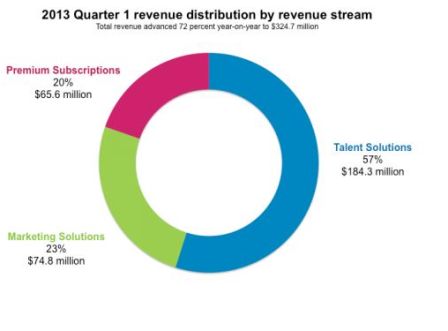LinkedIn turns 10 years old today. I don’t know about you, but I was an early user of the business-oriented social network, and have found LinkedIn to be an invaluable way to network professionally and socially. Indeed, the company in many ways is responsible for popularizing the term “social network” despite its business orientation.
Co-founder Reid Hoffman, who came up with the idea with associates Allen Blue, Konstantin Guericke, Eric Ly and Jean-Luc Vaillant, sums it up well in his blog commemorating the day:
Ten years ago, I co-founded LinkedIn in my living room with the mission of connecting the world’s professionals to make them more productive and successful. Inspired by the invaluable role relationships played in our own careers, we launched LinkedIn with the tagline “Relationships matter.”
At the end of our first month, we had 4,500 members in the network. Ten years later, we’re honored and humbled that so many of you have made LinkedIn a part of your daily professional lives.
He is correct about “many of you.” The company is now a publicly held one with more than 225 million members and nearly $325 million in quarterly revenue. It has more than 3,700 employees around the world, including in Mountain View, California, Chicago, Los Angeles, New York, Amsterdam, Dubai, Hong Kong, Milan, Mumbai, Paris, Singapore, Tokyo, Toronto and several others. It is available in 19 different languages too – besides English, there’s also Czech, Dutch, French, Indonesian, Italian, Malay, Polish, Romanian, Russian, Spanish, Swedish and more.
Not only has it grown in size, but it also has transformed the way in which people find jobs, stay current, and share insights. In fact, if you are not a member, or are one but have not updated your skills and joined the various affinity groups that share your multiple passions, what are you waiting for? In fact, it has become my go-to means for staying connected with business associates, and I am always looking to expand my network, so send me an invite.
Reality is, this has become what has been characterized as an “individual’s CRM.” This is not a bad description of all of the functionality it now contains.
A financial success story
LinkedIn has proven to be an invaluable business tool. However, what is most remarkable is how it carved out as space that has in many ways usurped the value of the job boards like Monster and Indeed. It filled a critical hole in what was then the emerging social network space dominated prior to Facebook by Friendster and MySpace, and developed an entire new category.
By enabling relationship building, LinkedIn gave job seekers access to the unadvertised possibilities. This is critical, as an outplacement specialist friend has told me that roughly 90 percent of their successes come from networking and not from sending resumes to job sites, be they third party ones or companies’ websites. Plus, this is a two-way street where hiring managers can gain access to a significant amount of information by looking at an individual’s skills, references and reputation along with their public description of their job history.
However, where LinkedIn stands out has been in its ability to make money. This is non-trivial given that the company started when the dot.com bubble was bursting and the “start money” has lost its appetite for another social network. The company has managed to produce a monetization model that is enviable as the graphic of their just ended quarter shows.

Continued transformation
It should be noted that LinkedIn continues to innovate through organic growth and acquisitions. In fact, the acquisitions of CardMunch, Connected, Rapportive, SlideShare and Pulse in recent years have given users true personalized life cycle relationship management tools. The company’s focus, despite how many of us use it, remains on helping people not just connect but to find what could come next.
I remember when I first became a member that I was hesitant to invite people, and many of my contacts refused because they were afraid of letting people find them. While this remains a concern with certain executives, like Twitter, Facebook and Google+, once critical mass was achieved, fear was replaced with the perception of value received.
This is a case where success begot success. In fact, if you are interested in more detail on the company’s history, click here.
Happy birthday, LinkedIn! Here’s to many more.